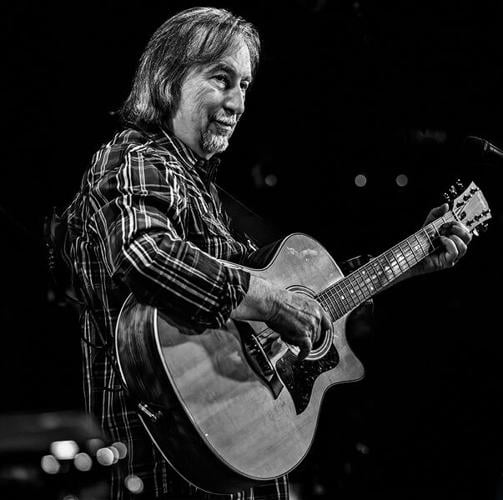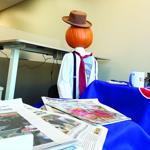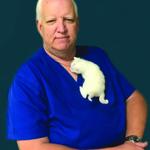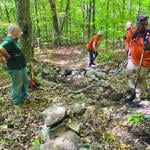PLYMOUTH — Rock 'n' roll legend Jim Messina has been on the cover of the Rolling Stone, played with the likes of Neil Young and Stephen Stills in Buffalo Springfield, and formed one of the top duos of the 1970s with Loggins and Messina. But sometimes it isn’t the fame and fortunate that drives a musician, but rather the love of creating tunes to stand the test of time, while still being inspired to make more.
Messina will be joined by his band The Roadrunners on Thursday, Nov. 20, for an intimate show at the Flying Monkey Movie House & Performance Center, where he will play some brand-new material, as well as old favorites from his days with some of rock’s most influential groups.
“I will be 78 on my next birthday, and when I look at when I started at 13, and where I am now, I think the greatest achievement is to maintain and continue working and making people happy who hear my music,” Messina said. “I never expected it.”
Messina is a student of music, saying he is often up late educating himself on the ins and outs of production, and what makes certain sounds even possible. Recently, he was awake at 1 a.m., trying to understand power transformers and how to produce 300 volts. He is building his first guitar amplifier, saying he still studies, and figured, why not?
Backtrack more than seven decades, and you’ll find the start of Messina’s musical career. He started playing the guitar when he was 5 years old, but it wasn’t until junior high school when he was buying singles and listening to The Champs, and things started to click.
After playing a couple shows with neighborhood friends, with one essentially being a babysitting gig at a local country club, he formed a group called His Jesters, his first shot at success. At only 16, Messina was already making a name for himself as a lead guitarist. But he was also multi-talented, and desired for his production skills.
He apprenticed under renowned audio engineer Mike Dorrough at the Bob Hudson-owned Emperor Productions in southern California, and suddenly he was learning how to produce, and worked with acclaimed drummer Earl Palmer and bassist Joe Osborne.
“These guys were so good,” Messina said. “I thought, they could read music like it was fly paper.”
He and Dorrough partnered to start building studios around Hollywood, and down the line was recommended for engineering gigs at places like Sunset Sound. One day, his manager asked if he was available for a demo.
Messina showed up the next morning, set up a microphone, and, wanting ambiance, he moved in a lava lamp. The lights went down, and a singer/songwriter came in. It was the first time he ever had visuals from the music being sung.
That singer was Joni Mitchell, and her work was being produced by none other than David Crosby, who ultimately went to Neil Young to tell him about this producer working at Sunset Sound who could help him with a new project: Buffalo Springfield.
“I was the engineer for their second album, and the third album I was asked to produce the band, and I got the job,” he said.
When Buffalo Springfield lost their bass player, the band held auditions, and Messina decided to give it a shot, despite mainly being a guitarist. He had already received some pointers from Osborne while building his studio, and he said the tricks he was shown worked, because Young was impressed by what he heard.
“There were 13 of us, and I was the last one. And I got about eight bars in, and I got a look from Neil,” he said. “It was like, 'Whoa, this guy knows the songs.' Why wouldn’t I know them?”
Messina said Buffalo Springfield “were great cats, but sometimes like herding cats.” These were budding rock stars, with Young and Stephen Stills on their way to being some of the most successful around.
After Buffalo Springfield disbanded, Messina and guitarist Richie Furay decided to form the band Poco, which really started in 1967, while Buffalo Springfield was still around, playing the Furay-penned song “Kind Woman.” Poco was short lived, from 1968 until Halloween of 1970, but this opened the door for perhaps Messina's greatest successful venture.
“I had just left Poco, and had conversations with people at CBS about [Kenny] Loggins, who they were considering signing,” Messina said. “Kenny and I met before Christmas, and made that decision to start working together at the beginning of 1971.”
Messina said he interviewed Loggins, and discovered he didn’t even own a guitar, and showed up without any tapes of his material. He knew Loggins had talent, but there was some work to be done. They started tinkering with what would become a couple of their biggest hits, “Danny’s Song” and “House on Pooh Corner,” and despite not being much of a rock 'n' roll repertoire, Messina saw something special in Loggins.
“I believed in Kenny because of his voice,” Messina said. “He had this ability to sing other styles of music, because he loved them so much.”
Messina called music producer Clive Davis, sent him some tapes, and while he liked what he heard, noticed Messina was doing a lot of the playing. Messina was tired of touring and had no intention of hitting the road, but Davis questioned who would take his place.
“I figured I would help support his first tour and show him the ropes, see how things went, and I would jump off after the first tour, when he was established,” Messina said. “Clive didn’t like that idea.”
Davis said too many great bands get together and break up after the first album, but in this case, he decided Messina could just sit in. The idea was to bring Loggins out first for acoustic, followed by Messina playing some country rock, then the two joining forces. The debut album, Kenny Loggins with Jim Messina “Sittin’ In,” was an instant success, and after some back and forth on a name for the duo, they went with Loggins and Messina.
“Suddenly, Loggins and Messina became one of the best selling duos at that time,” Messina said.
Loggins and Messina was a force between 1971 and 1976, selling more than 16 million records, with huge hits led by “Your Mama Don’t Dance,” which reached No. 4 on the Billboard Hot 100.
Now years later, Messina recalls times many could not even dream of. He played at storied venues like Carnegie Hall, Madison Square Garden, and Jones Beach, and said when he looks back at some of these moments, it was like he didn’t realize it was happening, as it was a whirlwind.
But his greatest achievement of all was starting to play music as a teenager, and still putting out new material at age 78.
“I still feel very inspired every day when I get up,” Messina said. “I have been able to maintain that interest in what I do. When I was 11 or 12, I said I wanted to know this business from the register up to the legalese. This has been what my life has been.”
Fans at the Flying Monkey will be able to hear material off his new album “Here, There and Everywhere,” which he released with his new band The Roadrunners. But there will be plenty from his days putting out legendary songs with equally legendary artists.
“What I work to do is make sure we have songs and arrangements that people have heard and enjoyed over their lifetime, and keep those arrangements to sound as close to the original as possible,” he said. “I believe that is important.”



















(0) comments
Welcome to the discussion.
Log In
Keep it Clean. Please avoid obscene, vulgar, lewd, racist or sexually-oriented language.
PLEASE TURN OFF YOUR CAPS LOCK.
Don't Threaten. Threats of harming another person will not be tolerated.
Be Truthful. Don't knowingly lie about anyone or anything.
Be Nice. No racism, sexism or any sort of -ism that is degrading to another person.
Be Proactive. Use the 'Report' link on each comment to let us know of abusive posts.
Share with Us. We'd love to hear eyewitness accounts, the history behind an article.